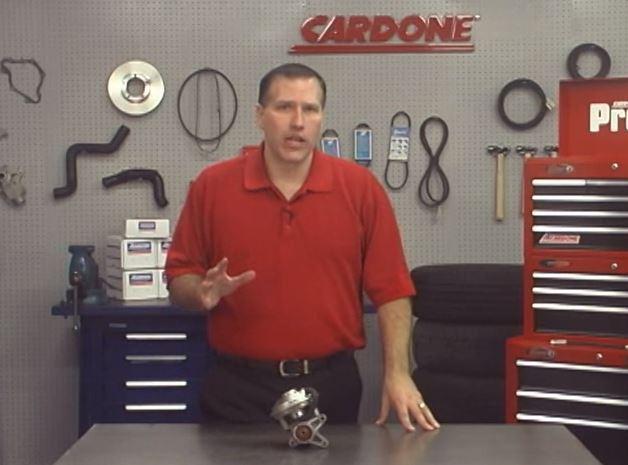Your car or truck relies on engine vacuum for a lot of applications, on things ranging from HVAC doors and pop-up headlights to critical vehicle systems like your power brakes and ignition timing.
While most engines naturally create adequate vacuum, if your vehicle has a diesel or small-displacement engine, then there’s a good chance it has an auxiliary vacuum pump to create additional vacuum pressure to operate those aforementioned systems and components.
Note: A long-duration camshaft with increased overlap can decrease engine vacuum as well, which means you’ll often see a supplemental vacuum pump installed on a high-performance engine.
Problem is, a bad vacuum pump can cause symptoms that are often improperly diagnosed as other issues—we’re talking things like a hard brake pedal, a check engine light, and rough idle.
The fine folks over at Cardone Industries made this helpful video to show you some common indicators of vacuum pump failure and, more importantly, show you some quick and easy diagnostic measures to nail-down improper engine vacuum as the culprit.
Better still, all you’ll need to perform the test is a simple vacuum gauge and a few minutes to measure your vacuum at an unplugged vacuum hose.
It’s an easy troubleshooting procedure and could potentially save you a lot of money by thwarting an incorrect diagnosis.


I was searching for a while about how to figure out faulty vacuum pump and finally, I got it. Thanks for very helpful video.
While it does not concern the replacement pumps from Cardone, since there was no comment section on the above Need advertised pump, I felt it maybe should be spoken to here. My car is running a mid sized cam and does not produce enough vacuum for my power brakes. I installed a Leed Bandit unit and it failed within an hour, simply clattered with no vacuum supplied. I pulled the unit and bench tested it. About half the time it would supply vacuum. I re-placed it with exactly the same pump and ran into the same issue after about a month of light use (shame on me). Take this as a warning and make sure your supplier has a “good” warranty on their product.
Paul, I can definitely relate to the anguish of getting all psyched up to do a particular job , but first a trip to the local auto parts vendor (due to the fear of sub-standard parts online), and lay hands on the actual part required while looking for any obvious defects.
Then feeling confident that I bought the perfect part during my drive back home.
After taking a moment to admire a job well done and double checking everything, the moment of truth is revealed when you eventually realize that the perfect part you just purchased and installed is BAD OUT OF THE BOX ! Yep, the dreaded BOOB strikes again.
That’s certainly a major reason to be mad as hell and all of that business about feeling good as a result of doing the job yourself is suddenly feeling more like a burden.
But no worries because the counter sales dude seems trustworthy as he explains how an actual BOOB event is virtually impossible so you swap the old BOOB part for an identical new one.
What happens next is unthinkable because it triggers a serious and potentially catastrophic brain meltdown as you realize the how and why of getting dumped on TWICE…..
Now you know the rest of the story……
Hello Paul,
I have a 1946 Chevy 3/4 ton truck and we are adding a small thumper with a larger cam. I have the old style cannister brakes that does need vacuum. Will this product provide enough vacuum for my old brake system, I know after rebuilding the springs and front end it was too late to use a S10 frame cost wise. Please let me know what I should do or should I reduce the cam size. I really don’t care to race the ole truck, but we will do shows and want it to sound good.
Hey Skip, sounds like you’ve got a pretty interesting ride. You should reach out to the Summit Racing Technical Department and talk with them one on one to ensure you get the ccurate advice on your setup.
i have a high performance/high compression vw motor (air cooled) that needs a crankcase breather support system. i am no longer using intake vacuum to remove the piston ring blow-by. venting both valve covers is not enough. looking for secondary vacuum assisted/remote canister set up. HELP!!!! any ideas??? 50+ year vw engine/ trans./ suspension guru. can fab (almost) anything. thank you, j.s.